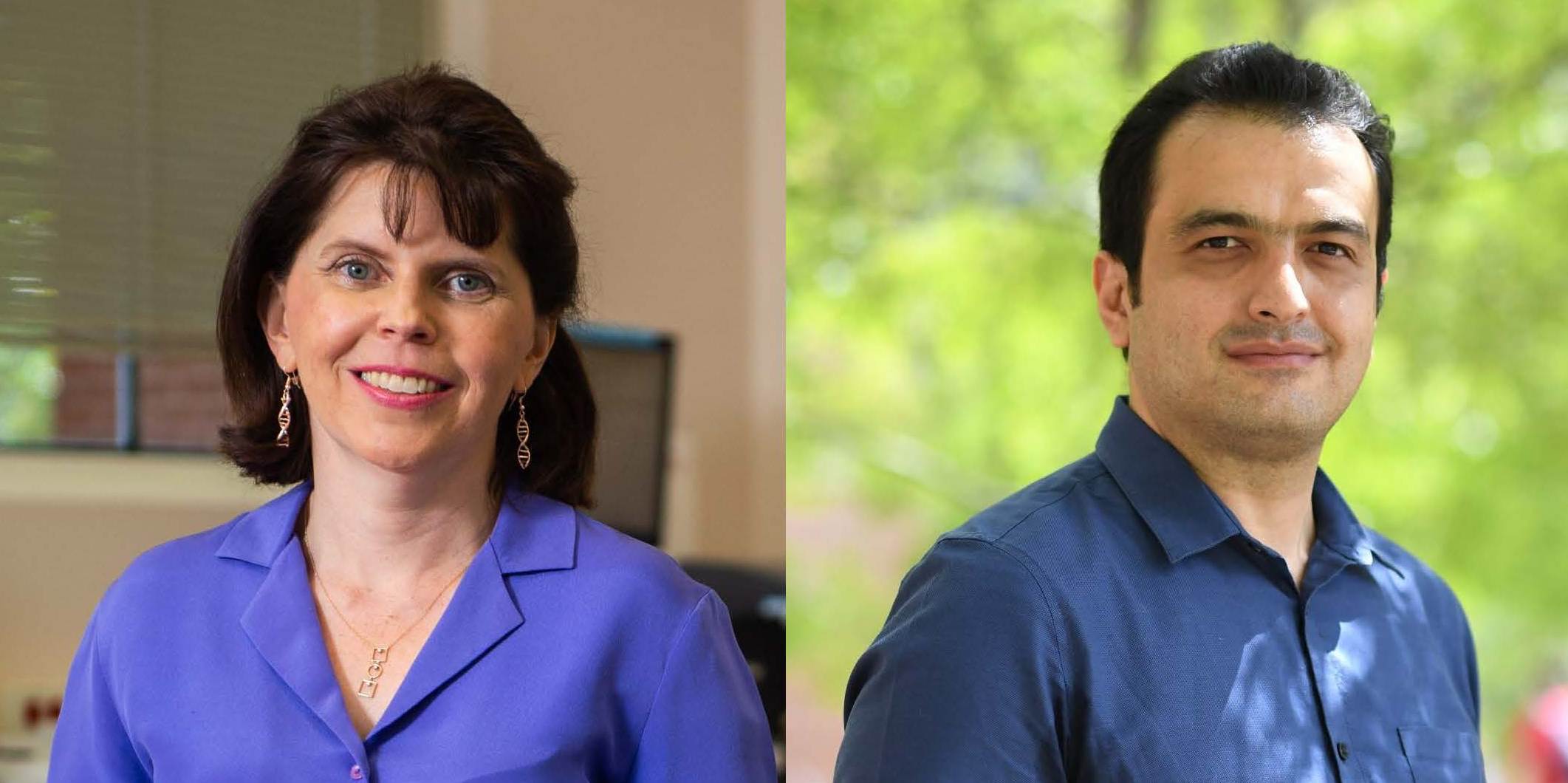NSF grant to allow Auburn professors to study how nanomaterials disperse in liquids
As consumer electronics get smaller, the need for smaller parts, such as batteries, grows. Researchers are actively exploring additive manufacturing techniques to create the necessary smaller parts, but they first need to establish a fundamental understanding of the nanomaterial known as MXenes.
Virginia Davis, the Dr. Daniel F. and Josephine Breeden Professor of chemical engineering, and Majid Beidaghi, associate professor of materials engineering, are working to evaluate the properties of MXenes with a $328,420 National Science Foundation award for their project “Understanding the Effects of Sheet Size and Salt Addition on Aqueous MXene Dispersions: Phase Behavior, Rheological Properties and Printability.”
“MXenes are a new material and they have a lot of amazing properties and potential in applications such as batteries, supercapacitors and things that power our everyday devices,” Davis said. “However, in order to enable them to be used in these applications, we have to understand how to process them into different structures.”
MXenes are a family of 2D crystalline nanomaterials composed of transition metal carbides, nitrides or carbonitrides. One advantage of MXenes is that they can be dispersed in water and processed into devices and structures using fluid phase processing techniques such as direct ink writing, a specialized 3D printing technique. To date, advances in MXene processing have required time-consuming and expensive trial-and-error approaches.
“Our grant is looking at using fundamental tools for understanding how solids disperse in liquids and to gain new insight as to the behavior of (MXenes) to enable them to be printed into small devices using additive manufacturing,” Davis said. “In this grant we’re particularly looking at MXenes in the context of other 2D or sheet-like nanomaterials. If we can understand those fundamental principles that govern these sheet-like materials, then we can apply it to other new materials that we may discover or make materials we already know about, such as nanoclays, work even better.”
This topic represents a natural cross-section of Davis’ and Beidaghi’s specialized research areas. Beidaghi has studied MXenes and their potential since he was a post-doctoral research fellow at Drexel University. Davis is interested in understanding how to effectively process nanomaterials and how they flow in liquids.
“Really it was both of us coming together at Auburn that allowed us to tackle both parts of the problem, the materials chemistry part and the phase behavior part,” Davis said.
The two plan to collaborate with other researchers to advance the experimental and theoretical methods to study dispersions of nanomaterials.
Media Contact: Cassie Montgomery, cmontgomery@auburn.edu, 334.844.3668
BY CASSIE MONTGOMERY

From the left: Virginia Davis and Majid Beidaghi
Categories: Engineering, Manufacturing, Advanced Systems
Back to Articles




